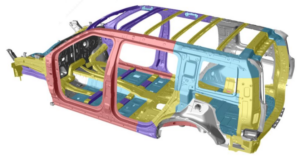The headline that started making the rounds thru the news networks was “Chevrolet Volt catches fire after crash”. Just look at the web search below! What you have to read into the story is the Chevrolet Volt caught fire in storage more than three weeks after a government crash test. That’s right three weeks after the test. The first news report I heard completely left out that it happened three weeks after the test. So what is your first thought, the Volt was crashed and burst into flames. However that was clearly not the case. The fire prompted federal safety regulators to look at safety procedures for electric vehicles after a crash. Not to look at an electric car that burst into flames after a crash test. General Motors has responded to this incident by stating the NHTSA did not follow GM’s recommended safety protocol for a post-crash Volt.
After reading the Chevrolet Volt Collision Awareness Guide and the Hybrid Collision Awareness Guide the only post-crash safety protocol I could was this:
A complete inspection of the high voltage(HV) system and components must be performed if the vehicle has been involved in a collision. The HVCID sensor and/or SIR Deployed vehicle-disable condition will remain active until cleared by the HPCM output control function of the scan tool.
Is there a missing safety procedure out there? General Motors has done a great job getting information about the Volt out to firefighters and other rescue workers. But did I miss a training for the towing and collision industries?
If you have not taken the Electric Vehicle Safety Training for the 2011 Chevrolet Volt training launched by the NFPA, Chevrolet, and OnStar I would do so now. The training features an inside look at the vehicle’s technology and safety systems. Here are some More training resources for the Chevrolet Volt. I have two reason you need to learn more about this vehicle, a motor vehicle crash in your response area could involve a Chevrolet Volt and that same Volt could be towed to a tow yard, collision center, or dealer lot in your response area! Think about it!
Stay Safe!
 Boron Extrication An in-depth look into vehicle extrication and rescues involving today's automobiles
Boron Extrication An in-depth look into vehicle extrication and rescues involving today's automobiles







